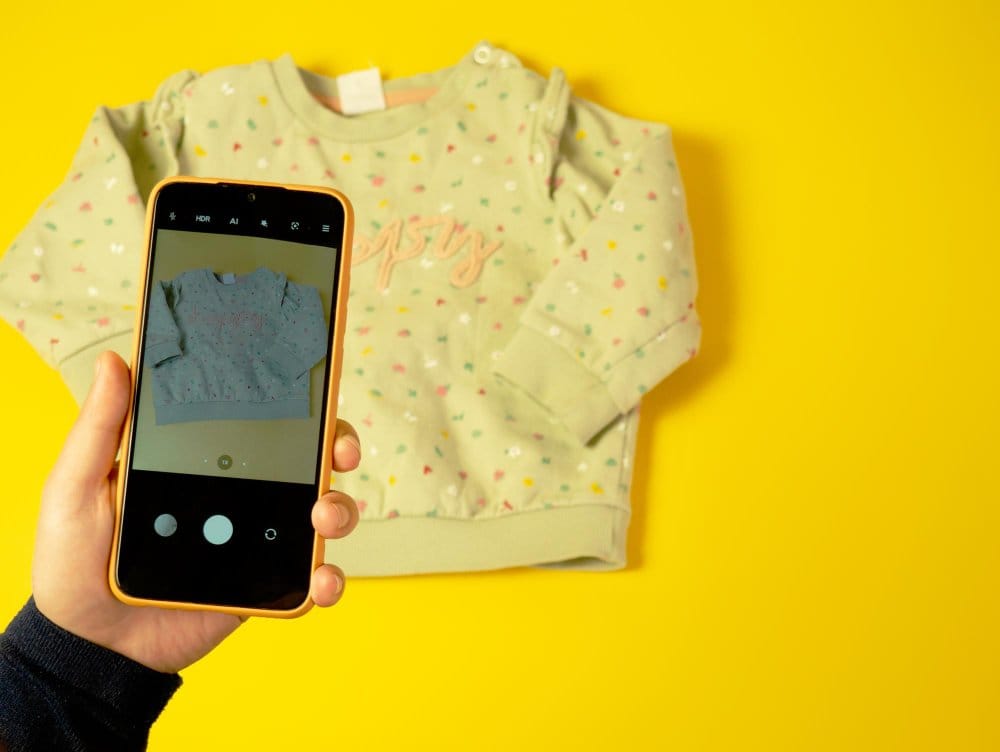Turn Outgrown Clothes into Cash: The Ultimate Guide to Selling Toddler Clothes
Selling old toddler clothes is a smart way to clear out space and earn a little extra cash. You can use online marketplaces like ThredUp, eBay, and Kidizen, or visit local stores such as Once Upon a Child and Children’s Orchard to sell gently used toddler clothing. These options make it easy to find new homes for clothes your child has outgrown.
You also have the choice to sell directly to friends, family, or your local parenting groups. This helps save on fees and shipping, and it can feel more personal. If making money isn’t your goal, donating toddler clothes is a way to help families in need while reducing waste.
Table of Contents
Key Takeaways
- There are many places to sell or donate used toddler clothes.
- You can choose online, local stores, or direct sales to people you know.
- Safe selling, good photos, and honest listings help you get the best results.
Best Online Marketplaces for Selling Toddler Clothes
You can find many online platforms to help you sell your toddler’s old clothes efficiently. Each option has its own steps, payment methods, and types of buyers it attracts.
“The secondhand children’s clothing market has grown substantially, with online resale platforms seeing a 25% increase in transactions year-over-year,” notes Sarah Chen, retail analyst at Consumer Market Research. “Parents are increasingly comfortable both buying and selling used children’s items online.”
Selling on eBay
eBay is a long-standing online marketplace where you can reach a huge audience. You create listings for each clothing item or in bundles, choosing between an auction or a set price. With eBay, you have to write descriptions, take clear photos, and set shipping details.
Shipping is usually handled by you, and you can use services like USPS or UPS. eBay charges a fee based on the sale price, so keep that in mind when pricing. Payments go through PayPal or directly to your bank. eBay works well for both brand-name and everyday clothes, and you can sell single pieces or lots.
Pros:
- Wide audience
- Flexible pricing
Cons:
- Seller fees
- Must manage shipping
Listing Items on Facebook Marketplace
Facebook Marketplace makes it easy for you to connect with buyers in your local area. You just need a Facebook account to get started. You upload photos, write short descriptions, set a price, and choose a location. Many buyers prefer to pick items up, so you often meet them in public places.
There are no selling fees, and payments are usually made in cash. Some buyers use Facebook Pay for shipping, but most sales are local. This works best if you want a quick sale and don’t want to deal with shipping. You can also join Facebook buy/sell groups to reach even more people nearby.
Benefits:
- No seller fees
- Fast, local sales
Things to Consider:
- In-person meetings required
- Mainly for local buyers
Using Specialized Kids’ Clothing Apps
Apps focused on kids’ clothing, such as Kidizen, Hanna-Me-Downs, and ThredUp, make it simple for you to sell toddler clothes. Some, like Kidizen, let you list individual items, set your own prices, and ship when they sell. Others, like ThredUp, send a bag for you to fill and mail back; they handle selling and pay you after the clothes are sold.
These apps offer built-in audiences interested in children’s clothing, and many handle payments securely. You should check each app’s fees and payout methods before listing. If clothing brands or condition matter, some apps include filters for buyers, which can help you sell certain items faster.
Examples of Kids’ Clothing Apps:
- Kidizen
- Hanna-Me-Downs
- ThredUp
Brand Value Guide: Which Clothes Sell Best
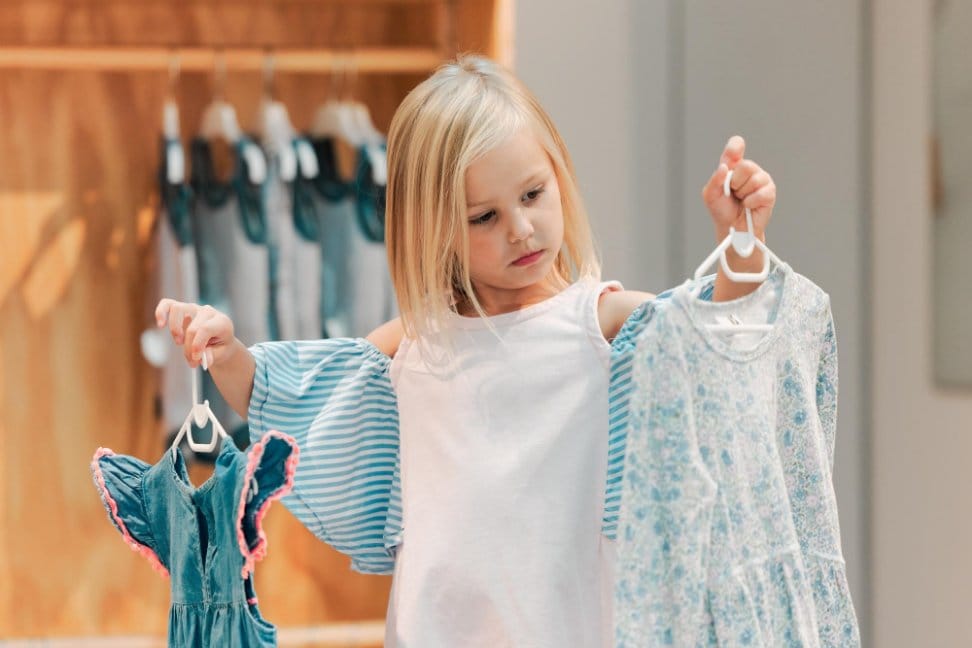
When selling toddler clothes, brand recognition significantly impacts resale value. Understanding which brands command higher prices can help you maximize your earnings and prioritize which items to list first.
Premium Brands (Highest Resale Value)
Premium brands typically retain 40-60% of their original value when in excellent condition. These include:
- Mini Boden
- Hanna Andersson
- Tea Collection
- Janie and Jack
- Burberry Kids
“Parents are willing to pay more for premium brands in the secondhand market because the quality stands up to multiple wearings,” explains Jennifer Morris, owner of Sweet Repeats Consignment in Portland. “Items from brands like Hanna Andersson or Mini Boden can sometimes sell for half their original price because the construction is so durable.”
Mid-Tier Brands (Moderate Resale Value)
These brands typically retain 30-45% of their original value:
- Carter’s/OshKosh B’gosh
- Old Navy
- Gap Kids
- H&M Kids
- Target’s Cat & Jack
Budget Brands (Lower Resale Value)
These brands usually retain 10-25% of their original value:
- Walmart brands
- Basic store brands
- Fast fashion items
Remember that limited editions, seasonal items with tags still attached, and trendy pieces can command higher prices regardless of brand.
Local Consignment Shops and Stores
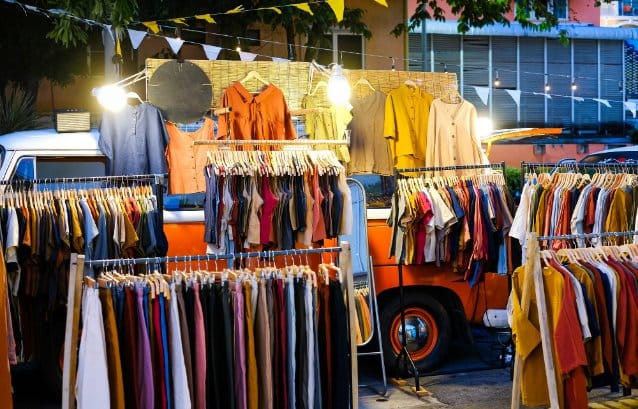
You may find that selling toddler clothes at local consignment shops can be both simple and rewarding. These shops allow you to turn outgrown items into cash or store credit, and they focus on gently used, high-quality clothing.
How Consignment Shops Work
When you bring your child’s clothes to a consignment shop, the staff checks each item for quality, brand, and cleanliness. They only accept items that are in good condition and in style for the current season.
After you drop off approved clothes, the shop sells them for you. Once an item sells, you get a percentage of the sale price—usually between 30% to 50%. Some shops offer cash, but many give store credit that can be used to buy other items in the shop.
Many consignment shops set clear guidelines about what they accept. For example, well-known stores like Once Upon A Child buy and resell toddler clothes, shoes, and even toys. Each shop has its own rules for drop-off times and payment.
Finding Reputable Local Shops
You can start by searching online for children’s consignment shops in your area. Local options in metro Detroit include The Funky Frog, Lollipop Kids Children’s Resale, and Value World. Many cities have similar stores, some with several locations.
Before you visit a shop, check customer reviews on sites like Yelp or Google. Look for comments about pricing, staff friendliness, and how fast items sell. Well-reviewed shops make the process smoother and help you feel confident about leaving your child’s clothes.
Also call ahead to ask about their intake process, current needs, and payment policies. Some shops only take appointments or accept certain brands and sizes. Keeping track of these details makes it easier for you to prepare and get the best results.
Seasonal Selling Guide: Timing Matters
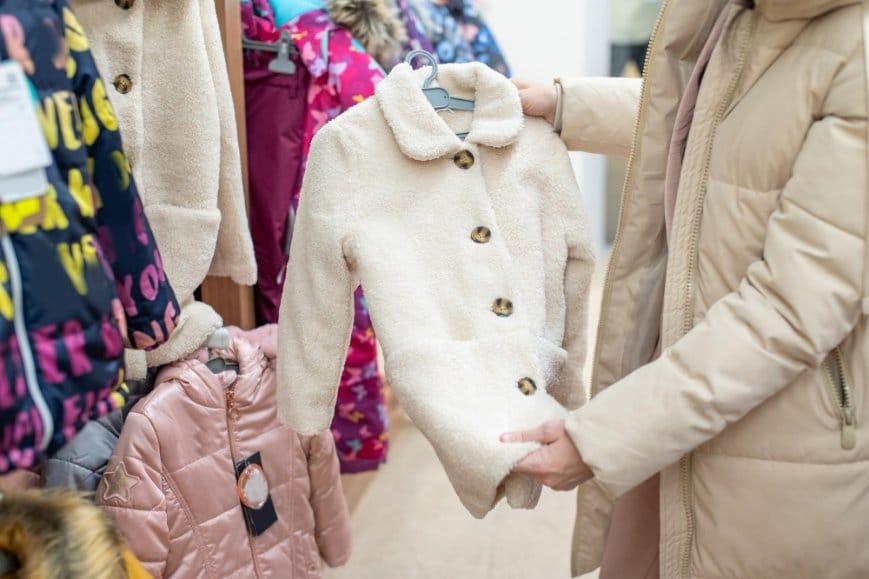
Knowing when to sell certain toddler clothes can significantly impact how quickly they sell and the price they command. Planning ahead based on seasonal demand helps you maximize profits.
Spring (February-April)
- Best items to sell: Easter outfits, light jackets, rain boots, spring dresses
- Start listing: 4-6 weeks before the season begins
- Tip: Spring is an excellent time to sell swimwear as families plan for summer
Summer (May-July)
- Best items to sell: Shorts, t-shirts, sandals, swimwear, summer dresses
- Start listing: Early April through June
- Tip: Lightweight pajamas and sun hats are hot sellers during this period
Back-to-School (July-September)
- Best items to sell: Play clothes, shoes, light jackets, classroom-appropriate outfits
- Start listing: Mid-July, with peak demand in August
- Tip: Many consignment stores do major buying pushes in July for fall inventory
Fall (September-November)
- Best items to sell: Sweaters, jeans, light jackets, boots, Halloween costumes
- Start listing: August through early October
- Tip: Halloween costumes can sell for premium prices in September
Winter (November-January)
- Best items to sell: Heavy coats, snow boots, holiday outfits, warm pajamas
- Start listing: October through December
- Tip: Brand-name winter coats and snow gear command the highest prices of the year
“Most parents shop a season ahead,” explains Maria Gonzalez, former manager at Children’s Orchard. “I always tell sellers to think 6-8 weeks ahead of the actual season change to maximize their selling potential.”
Selling Directly to Friends and Community
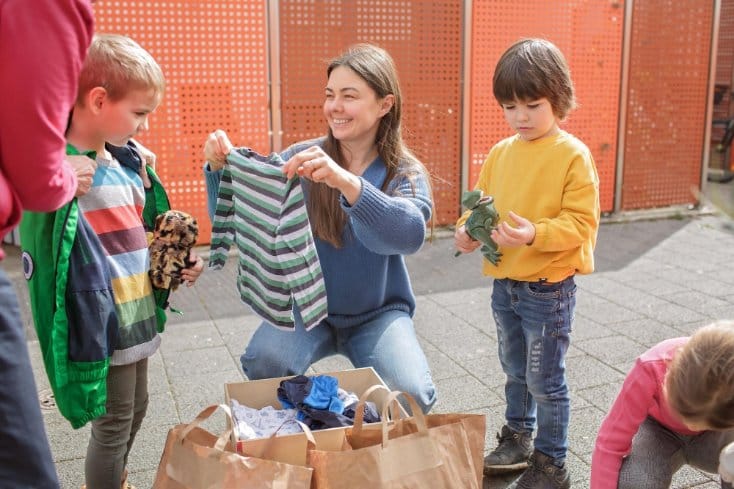
You can sell your toddler’s old clothes quicker by connecting with people you know or who live near you. This way saves time, avoids shipping, and helps neighbors as well as friends find affordable kids’ clothes.
Word of Mouth Sales
Start by telling your friends, family, and coworkers that you have toddler clothes for sale. Most parents or caregivers know someone who needs extra clothes for their young kids. Talking to other parents at daycare, school, or playgrounds is a simple way to spread the word.
Group texts or social media posts in parent groups work well. You might include clear photos and a short list of brands or sizes in your message. If your friends tell others, you can reach a larger group without much effort.
Selling to people you know often means faster sales and fewer worries about payments or no-shows. You’ll usually agree on a low price since both sides get a good deal, and trust is higher between friends.
Organizing Swap or Sale Events
You can organize or join small clothing swap events at your home, local parks, or community centers. Invite friends and local parents to bring their kids’ outgrown clothes to trade or sell. Setting a date and spreading the word with flyers or posts helps more people join in.
At these events, sort clothes by size and type, making it easy to browse. Bring a folding table, clear price tags, and boxes for unsold clothes. Some families prefer swapping items, while others pay a small fee for what they need.
This face-to-face method lets you talk to other parents, check clothing condition, and give sizing advice. It’s a good way to make local connections and sell your toddler’s clothes in a friendly setting.
Success Stories: Real Parents Share Their Experiences
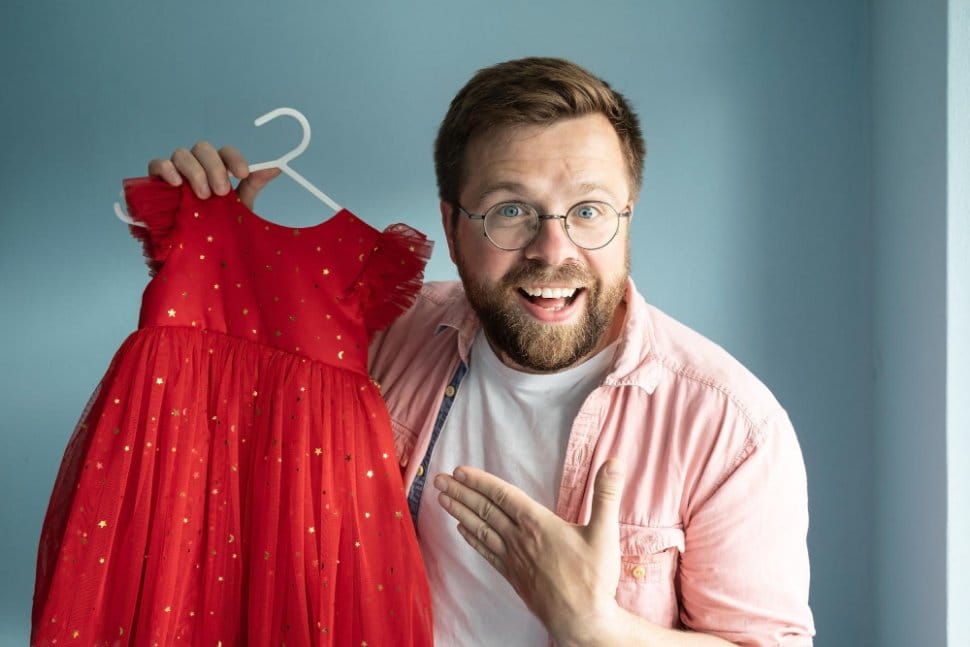
Real-life examples can provide inspiration and practical strategies. Here are a few success stories from parents who have effectively sold their children’s clothes:
“I made over $300 in a single weekend by creating themed bundles on Mercari. Instead of selling individual items, I grouped outfits by theme – dinosaurs, space, animals – and photographed them together. The themed bundles sold much faster and for more money than individual pieces would have.” — Jamie S., Chicago
“After trying several consignment shops, I found that Once Upon A Child gave me the best returns. I earned $175 for a season’s worth of clothes my twins outgrew. The key was bringing freshly laundered items on hangers, which saved the staff time and got me higher offers.” — Michael T., Boston
“I created an Instagram page just for selling my daughter’s boutique clothes. By using relevant hashtags and posting consistently, I built a following of local moms who now check my page first before buying new. I’ve recovered about 60% of what I initially spent on her wardrobe.” — Leila K., Atlanta
These stories demonstrate that with the right approach, selling used toddler clothes can be significantly profitable.
Donating Old Toddler Clothes
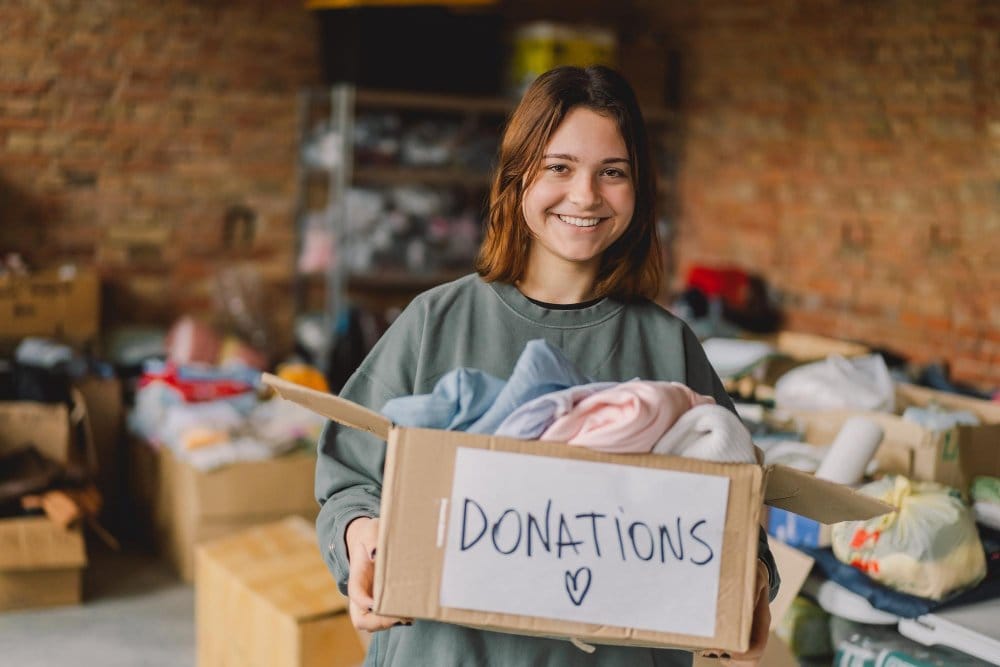
Donating toddler clothes helps families in need and gives unwanted items a second life. The process is usually simple and can make a clear difference in your community.
Benefits of Donating
When you donate old toddler clothes, you’re helping other families who need them. Many families struggle to buy clothes for their kids, so donations can be important for them. Giving your child’s outgrown items can keep clothes out of landfills, reducing waste and helping the environment.
According to the Environmental Protection Agency, the average American throws away about 81 pounds of clothing each year. By donating, you help reduce the approximately 11.3 million tons of textiles that end up in landfills annually. A single t-shirt can take up to 5 years to decompose, while synthetic materials may never fully break down.
Most donation centers accept gently used clothing, which means more children can wear well-made items. Charities often give these clothes directly to families or sell them at low prices to raise money for programs. By donating, you’re supporting these efforts and helping your community grow stronger.
Finding the Right Donation Centers
Finding a good place to donate toddler clothes is important. Check local charity shops, like Goodwill or The Salvation Army, because they often accept children’s clothing. Some shelters and family centers also need baby and toddler items, especially in colder months.
Before donating, make sure the clothes are clean and in good condition. You might call the center or visit their website to see what items they accept. Some organizations, like local churches or community programs, run clothing drives at certain times of year. This helps you give your donations where they’re needed most.
Maximizing Value When Selling Used Toddler Clothes

To get the most money for toddler clothes, pay close attention to how you get them ready for sale and how you choose your prices. Small details help your listings stand out and make buyers more willing to pay higher prices.
Preparing and Presenting Clothing
First, wash and neatly fold or hang every item. Clean clothes without heavy wrinkles or stains look much better in photos.
If there are any flaws, mention them clearly and show them in pictures. This builds trust with buyers. Use a plain background for photos and good lighting so the clothes are easy to see.
Grouping similar clothes, like onesies by size or season, helps attract buyers who want to buy bundles. Also check for missing buttons, loose threads, or broken zippers and do small repairs when possible.
For online sales, upload clear photos and write honest descriptions. When selling in-person, sort clothes by type and size on a table or rack. This organization makes shopping fast and easy.
Example of a High-Performing Listing:
Listing Title: “5T Boys Winter Bundle – 8 items – Excellent Condition – Carter’s & Gap”
Description: “8-piece winter bundle for boys size 5T. Includes 2 long-sleeve shirts, 2 sweaters, 2 pairs of pants, 1 vest, and 1 light jacket. All items from Carter’s and Gap, smoke-free home. Minimal wear, no stains or tears. Perfect for daycare or play. Will separate items for the right offer.”
This listing succeeds because it clearly states size, condition, brands, and exactly what’s included while using high-quality photos.
Pricing Strategies
To set fair prices, check what similar items are selling for on Facebook Marketplace, eBay, or local consignment shops. Price clothes a bit lower if they are heavily used, or a little higher if they are like-new or for popular brands.
Here’s a basic pricing guide you can use:
| Condition | Typical Price Range (per item) |
|---|---|
| Like New | 50-70% of original price |
| Gently Used | 30-50% of original price |
| Well Worn | 10-30% of original price |
When selling bundles, offer a small discount to encourage buyers to take more items. Clearly state if your price is firm or if you are open to offers. Regularly lowering prices on clothes that do not sell helps move items faster, especially as seasons change.
Shipping, Payment, and Safety Tips

When you sell toddler clothes online, you want to make sure both your money and your items are safe. Knowing the best ways to handle payments and shipping can help you prevent problems and keep buyers happy.
Safe Payment Methods
Always use trusted payment methods to avoid scams. Most selling sites like Poshmark, Mercari, or eBay use built-in systems that hold money until the buyer marks the order as received. This protection helps make sure you get paid, and the buyer feels safe too.
If you sell clothes on Facebook Marketplace or through local groups, prefer payment apps with buyer protections, such as PayPal Goods & Services or Venmo Purchase Protection. Stay away from sending money as “friends and family” on PayPal, since it removes any protection for both sides. For in-person local sales, cash is sometimes easiest, but count the money in front of the buyer and meet at a public place for safety.
The table below lists some safe ways you can get paid:
| Payment Method | Buyer Protection | Seller Protection |
|---|---|---|
| PayPal Goods & Services | Yes | Yes |
| Venmo Purchase Protection | Yes | Limited |
| Poshmark/Mercari Payments | Yes | Yes |
| Cash (in person) | No | No |
Shipping and Delivery Options
Pick shipping methods based on cost, speed, and tracking options. For single items, use first-class mail if the package is under 16 oz. If you sell several pieces together, try flat-rate boxes from USPS because they can save you money.
Many selling platforms like Poshmark and Mercari give you pre-paid labels when your clothes sell. Print the label, pack the clothes safely in a bag or box, and drop them at the post office. For local deals, you might offer porch pickup, but only if you feel safe sharing your home address. When shipping yourself, always use a trackable service and message the buyer with the tracking number.
To keep your clothes protected, fold them neatly and put them in a sealed plastic bag inside the shipping box. This helps prevent water damage or dirt during delivery. Also keep your receipts until the buyer receives the order in case there are questions about delivery.
Alternatives to Selling Old Toddler Clothes

When you decide not to sell old toddler clothes, there are other useful options. These choices can help reduce waste and give new life to clothing that is no longer needed.
Upcycling and Repurposing
You can look for ways to reuse your child’s outgrown clothes at home. One idea is to turn old t-shirts into cleaning rags, bibs, or doll clothes. You can use soft pajamas to make small pillows or sewing projects. If you sew or do crafts, scraps from worn-out pants and shirts become quilt patches, reusable napkins, or even art supplies for your kids.
For those who want a quick project, cutting the legs off old leggings makes simple shorts for summertime. Making headbands or hair ties out of stretchy tops is another easy trick. Upcycling saves money and keeps clothing out of landfills. For inspiration, look up step-by-step guides online or watch short craft videos.
Clothing Recycling Programs
If you can’t reuse or donate clothes, consider clothing recycling programs. Many stores like H&M and some local recycling centers accept fabric, even if it’s stained or torn. Some cities have textile bins or special drop-off locations for old clothing.
When you use a recycling program, the materials are broken down and turned into items like insulation, cleaning cloths, or industrial materials. This helps prevent clothes from ending up in landfills. Always check the rules and accepted items for each program, as not all fabrics are allowed. Make sure the clothes are clean before dropping them off.
The Environmental Impact of Reselling Toddler Clothes
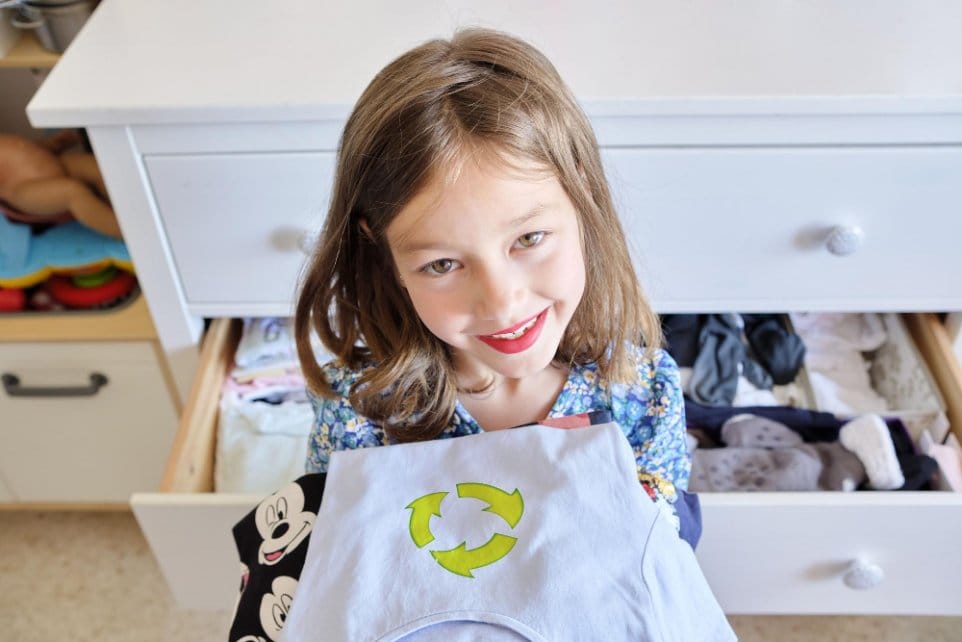
When you choose to resell your child’s outgrown clothes instead of discarding them, you’re making a significant positive environmental impact. Understanding these benefits can make the effort of selling old clothes feel even more worthwhile.
Reducing Textile Waste
The fashion industry produces an enormous amount of waste. According to the Environmental Protection Agency, Americans throw away about 16 million tons of textile waste annually. Children’s clothing contributes significantly to this waste because kids outgrow their clothes so quickly.
By reselling just one bag of toddler clothes, you can prevent approximately 8-12 pounds of textiles from entering landfills. When clothes decompose in landfills, they release methane, a greenhouse gas that contributes to climate change.
Resource Conservation
Manufacturing new clothing requires substantial resources. Producing a single cotton t-shirt uses approximately 713 gallons of water. By extending the life of children’s clothing through resale, you help conserve:
- Water: Reduced demand for new cotton production saves thousands of gallons
- Energy: Less manufacturing means lower energy consumption
- Raw materials: Fewer resources extracted from the environment
Carbon Footprint Reduction
The fashion industry accounts for about 10% of global carbon emissions. When you resell clothing instead of buying new, you help reduce these emissions. On average, extending the active life of clothing by just nine months reduces its carbon, water, and waste footprints by 20-30%.
“The most sustainable garment is the one already in existence,” notes Emma Reynolds, sustainability researcher at the Textile Conservation Institute. “By reselling children’s clothing, parents are participating in a crucial form of environmental stewardship.”
Conclusion
Selling old toddler clothes offers multiple benefits – from decluttering your home and earning extra cash to helping other families and protecting the environment. With so many platforms and methods available, there’s an option that fits every parent’s needs and preferences.
The key to successful selling lies in preparation and presentation. Clean, well-photographed items with honest descriptions attract more buyers and command better prices. Understanding which brands hold their value and timing your sales according to seasonal demand further maximizes your returns.
When deciding where to sell, consider your priorities. If convenience matters most, local consignment shops or Facebook Marketplace might be your best option. If maximizing profit is your goal, specialized platforms like Kidizen or strategic eBay listings could yield better results. For those with premium brands, focusing on platforms where buyers specifically seek these items will help you recover more of your initial investment.
Remember that not every item needs to be sold. Sometimes donation, upcycling, or recycling makes more sense for heavily worn items. These alternatives still provide benefits – helping families in need, reducing landfill waste, and conserving resources.
Final Recommendations:
- Sort strategically: Separate clothes by quality, brand, and season before deciding which to sell, donate, or repurpose.
- Price realistically: Research comparable items to set fair prices that reflect brand, condition, and current demand.
- Consider bundling: Group similar items to save time and attract buyers looking for convenience.
- Think seasonally: List winter clothes in early fall and summer clothes in late winter to catch buyers shopping ahead.
- Prioritize safety: Use secure payment methods and meet local buyers in public places.
- Keep good records: Track your sales for tax purposes if you sell regularly.
- Be transparent: Honestly disclose any flaws to build trust and avoid returns.
By approaching the process thoughtfully, you can transform your child’s outgrown clothes from clutter into cash, while contributing to a more sustainable future. Whether you’re a first-time seller or an experienced reseller, the strategies outlined in this guide will help you navigate the process successfully and maximize the value of your child’s wardrobe.
Remember that each tiny t-shirt or pair of outgrown shoes represents an opportunity – to recoup some costs, help another family, and reduce environmental impact. In today’s conscious consumer climate, that’s a winning combination for everyone involved.
Frequently Asked Questions
When selling children’s clothing, several common questions arise. Here are answers to help navigate potential challenges:
What should you do if a buyer claims an item arrived damaged?
If selling through a platform like eBay or Poshmark, document the item’s condition before shipping with photos. Most platforms have buyer/seller protection policies. If selling independently, consider offering a partial refund if the buyer provides photo evidence of damage.
How should you handle returns?
For platform sales, follow their return policies. For independent sales, clearly state your return policy in listings—whether you accept returns, under what conditions, and who pays return shipping. Many sellers use a “all sales final” policy for used children’s clothing.
What’s the best way to price items with minor flaws?
Disclose all flaws with clear photos and descriptions. Price these items at least 15-20% below similar flawless items. Sometimes bundling slightly flawed items with perfect ones can help move inventory.
How can you resolve disputes with buyers?
Communication is key. Respond promptly and professionally to concerns. If using a selling platform, familiarize yourself with their dispute resolution process. For direct sales, consider meeting halfway on refunds or replacements to maintain goodwill.
Is it worth selling very worn everyday brands?
Generally, heavily worn basic items from budget brands aren’t worth listing individually. Consider bundling them as “play clothes lots” or donating them instead.

